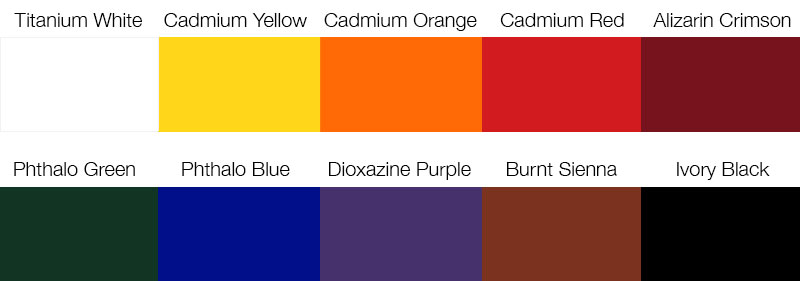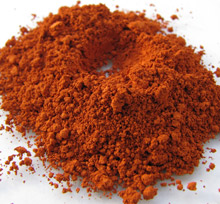Acrylic painting all details and guide
Acrylic painting
Buying acrylic paint when you're a beginner can seem daunting because there are so many different brands, colors, and variations to choose from... but fear not! This page will help you navigate that maze and find acrylic paints that match your needs and your budget.
For more information on how to actually use them, check out my wow paint artist page.
Before we begin: Selecting paint is a very personal experience because it hinges on the style of art you prefer and specific painting techniques you employ. I'm going help you make an informed choice, but you really need to just get some paint and start making art! As you gain experience you'll come to know what brands and varieties you like best.
So let's get started! When shopping for acrylics you need to consider the following factors: quality, color, permanence, viscosity, tube or jar, and drying time.

You can buy acrylics in two grades: artists' quality and students' quality. Artists' quality paints (sometimes referred to as "professional") come in a wide range of colors, have a high concentration of finely ground pigment, and boast high permanence ratings. Students' colors are cheaper but the trade off is a smaller selection, lower pigment levels and the possible inclusion of fillers which may weaken the color strength. The difference between the two isn't just how they're made - often it's noticeable that artists' colors are more vibrant and have a smoother consistency that makes them easier to blend and layer.
If you're a beginner and on a budget, it's fine to start off with students' quality paint, but I'd recommend graduating to artists' colors once you start producing artwork that you care about preserving (especially if you aim to sell your work). Another option is to take the middle road by getting students' paints for the earth colors (which are almost just as good) but forking out more for the pure intense colors. Some artists also save money by using students' colors for underpainting and using professional quality paint on top.
There are a dizzying number of colors available for acrylics. If you're a beginner, start off with the 10 colors below. You can mix them to create other colors as needed.

Another option for beginners is to start off with an acrylic paint set. This will save you some money per tube and give you a good place to start. Often it's helpful for beginners to not think too much about materials and just start painting.

If you're looking to buy artists' quality paints, you'll notice that some colors are much more expensive than others (although still cheaper than oil paints). This is because some pigments are very hard to obtain. Some manufactuers will group their paints according to "series" with "1" being the cheapest and "7" the most expensive. Typically the earth colors are the cheapest, while the colors derived from cadmium can cost up to four times as much! Some brands offer cheaper options by substituting with synthetic pigments, but they will likely have a lower permanence rating and less color intensity. You can spot this on the product by looking for the word "hue" after the pigment name. With that said, I use some of the "hue" colors in my art and I'm satisfied with the quality.
These days it's also possible to buy "speciality colors" like fluorescent or irridescent paints which contain pigments that, on their own or mixed with regular paint, create interesting luminous effects. Some of these pigments aren't permanent, so keep that in mind if you decide to experiment. Speaking of which...
Permanence, often called lightfastness, refers to the ability of the pigment in the paint to resist gradual fading when exposed to light. Pigments that fade over time are often called fugitive colors. Most acrylic colors have much higher permanence ratings than oils or watercolors, which is another reason why I love them!
There are certain lightfastness standards that you should look for when selecting paint. ASTM International (formerly known as the American Society for Testing and Materials) classifies artists' colors based on a test that simulates 20 years of gallery exposure:
ASTM Permanence Standard
ATSM I = Excellent Lightfastness
ATSM II = Very Good Lightfastness
ATSM III = Not Sufficiently Lightfast
Typical Manufacturer Standard
**** or AA = Extremely permanent colors
*** or A = Durable colors.
** or B = Moderately durable colors.
* or C = Fugitive Colors
Unless you're practicing or experimenting, I recommend using only paints with excellent or very good lightfastness ratings. You can find the ATSM rating on the tube or jar.
Viscosity refers to the consistency or thickness of the paint. Heavy body acrylics have a thick, buttery consistency (similar to oil paints) that retains brushstrokes and facilitates color mixing and blending. Alternatively, fluid acrylics are thinner (but contain the same pigment concentration) and are suited to detail work, staining, watercolor techniques, and dry-brush work. If you're looking for something in between, there are also many different acrylic mediums that you can mix into the paint to get the exact consistency you want.
Whichever type you buy depends the style of your paintings and personal preference. Some artists might use several types in the same painting, but if you're just starting out, begin with the more common heavy body acrylics because they can still be thinned with water or an acrylic medium if needed.

Heavy body acrylics are available in either tubes or jars. Here's how they differ: Tubes are small and portable but you can save money with jars by buying more paint at once. They also have slightly different consistencies: paint from tubes is paste-like, while paint from jars is still thick but will flatten out when on the palette.
If you're not sure which to get, start off with the tubes and buy a few jars once you've found particular brands and colors you use a lot. If you're buying your first acrylic paints, start off with the smaller 2 fl.oz. tubes because a little goes a long way and you want to keep your options open so you can still experiment with other brands.
Fluid acrylics typically come in bottles with screw tops or drippers that make it easy to apply the paint to the palette.
A lot of artists prefer acrylics because they dry so quickly, but this can be a hassle if the paint dries out on the brush or palette before you're done with it. Plus, if you want to mix paint on the canvas and create blending effects, it's easier to use a paint that stays wet for longer amounts of time. Luckily, you have some options if you'd like to extend the drying time of your acrylics. Artists who like the slow drying time of oil paints, but still prefer the versatility and permanence of acrylics, can either use a retarding medium or buy interactive/open acrylics, which is a relatively new form of acrylic paint that is manufactured to include a retardant that can slow drying time down to as long as a few weeks. Open acrylics are a convenient solution for people looking to replicate oil paints with acrylics.





this was an amazing article which realted to all the thoughts that i had regarding this topic
ReplyDeleteit brightened those unsolved question for me
thanku
mehdi
jr developer chloros technologies